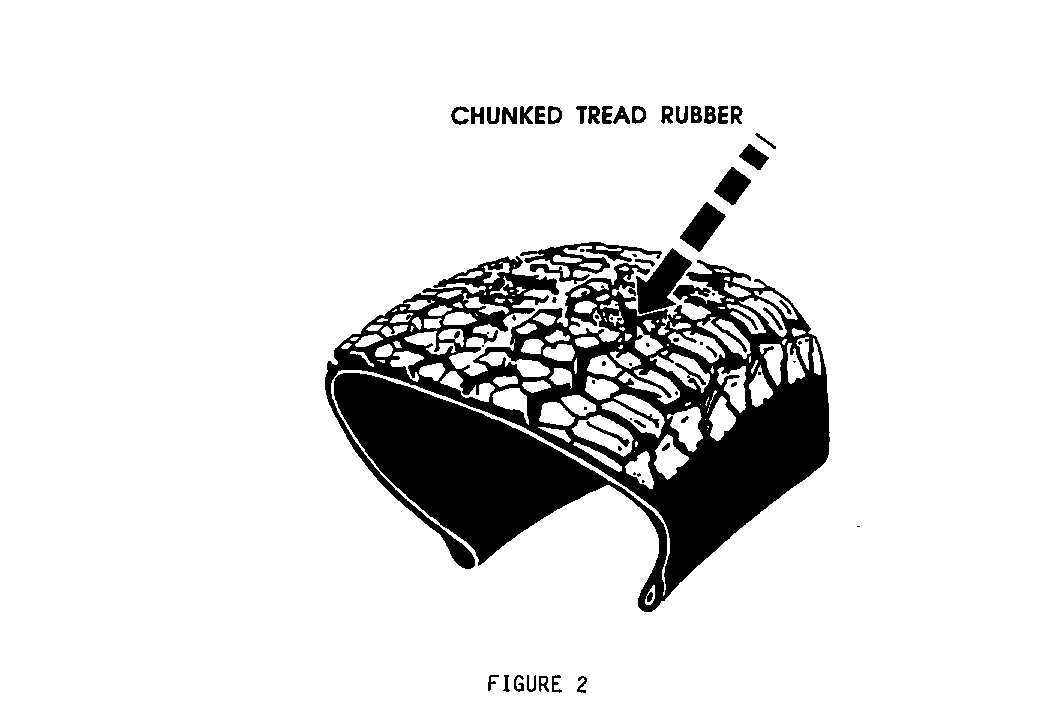TIRE DAMAGE FROM ASSY PLANTS TIRE REPLACEMENT

SUBJECT: TIRE DAMAGE CAUSED IN GM ASSEMBLY PLANTS - TORN BEAD RUBBER, TREAD CHUNKING (REPLACEMENT OF TIRES)
MODELS: 1991-93 ALL TRUCKS
THIS BULLETIN CANCELS AND REPLACES GMC TRUCK SERVICE BULLETIN 92-3E-59, DATED MARCH 1992. ALL COPIES OF 92-3E-59 SHOULD BE DESTROYED.
Incidents of the following types of tire damage have recently been reported from the field. The cause of some of this damage has been traced to the assembly plant. Since these tire conditions are not the fault of the tire manufacturer, any tires requiring replacement for these reasons should be considered GM's responsibility. The purpose of this bulletin is to help identify assembly plant tire damage.
TORN BEAD RUBBER CONDITION:
A bulge (not an indentation) may develop on the outboard sidewall of the tire(s), and/or a slow air loss may develop.
CAUSE:
----- The assembly plant may have cut the tire's bead rubber during tire mounting. This cut cannot be seen when the tire is mounted on the wheel. When inflated, air may enter through this cut and work its way into the tire's body ply cords. This trapped air can create a sidewall bulge.
CORRECTION:
---------- Any tire with a sidewall bulge must be replaced. Mark the location of the bulge then dismount the tire from the wheel and inspect for cut or torn rubber. The cut is likely to be located just inside the tire near the outboard bead (see Figure 1). If cuts are found, replace the tire under GM's New Vehicle Warranty. if no cuts are found (and the tire was bulged), replace the tire under the terms of the Tire Company Warranty.
TREAD CHUNKING CONDITION:
Pieces of rubber may be torn or "chunked" out of the tire's tread. This missing rubber is usually isolated to one area of the tread, although more than one area is possible (see Figure 2). The missing rubber should be apparent visually during pre-delivery inspection.
CAUSE:
----- The assembly plant may have chunked out this tread rubber during dynamic end of line roll tests.
CORRECTION:
---------- Any tire that shows this condition should be replaced under GM's New Vehicle Warranty. Other types of damage noted at pre-delivery should be considered the responsibility of the transportation company.


General Motors bulletins are intended for use by professional technicians, not a "do-it-yourselfer". They are written to inform those technicians of conditions that may occur on some vehicles, or to provide information that could assist in the proper service of a vehicle. Properly trained technicians have the equipment, tools, safety instructions and know-how to do a job properly and safely. If a condition is described, do not assume that the bulletin applies to your vehicle, or that your vehicle will have that condition. See a General Motors dealer servicing your brand of General Motors vehicle for information on whether your vehicle may benefit from the information.
